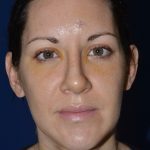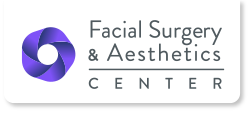
Dr. Menachof, MD, FACS has performed thousands of facial plastic surgery procedures in over 20 years of experience. He has been recognized as a Fellow by multiple academies, named one of America’s Top Facial Plastic Surgeons continually since 2003 and is featured in multiple national publications.
Rhinoplasty can change the size and shape of your nose so that it is in balance with the rest of your facial features. However, it takes anywhere from six to 12 months, or sometimes longer, for you to see the final results from your rhinoplasty. Many surgeons offer computer imaging during your initial consultation, which helps you imagine what you might look like after the procedure.
Most people have concerns during the healing process because it’s so difficult to assess what you’re going to look like when your nose has finished healing. Keep in mind that the way the nose looks at a week isn’t the way it will look when it has finished healing.
When dealing with rhinoplasty swelling, don’t try to figure out how it’s going to look based on how it looked in the first week or two. Trust your surgeon’s expertise (it’s why you chose him or her in the first place), and communicate your concerns to your surgeon. He or she is in the best position to ease you through the process (and it is a process!)
How Long Does It Take to Heal From a Rhinoplasty
Swelling can last for up to a year after a rhinoplasty and depending on how much work was done, it could possibly last even a little bit longer. Patients tend to be “public ready” after about two weeks.
While swelling at the tip following a rhinoplasty can take up to a year to go away completely, 90 percent of the swelling is usually gone in about four to eight weeks. It’s not uncommon for a crooked looking nose to straighten out as the swelling slowly resolves. At this point, your best option is to simply be patient, trust your surgeon, and stay in contact with him or her, letting them know your concerns so that they can be involved in the process.
Healing From an Open Rhinoplasty
Open rhinoplasty is when there is an external incision at the base of the nose and usually takes longer to heal than closed rhinoplasty—it also tends to swell more. The tip takes the longest time to heal and mold to the new framework because it’s the thickest skin of the nose. If the tip of your nose is still very firm, it may mean that there is still some swelling.
Examples of Swelling After Rhinoplasty




Rhinoplasty Recovery with a Nose Cast
If your rhinoplasty involves breaking the nasal bones, many surgeons suggest wearing casts after the rhinoplasty surgery to hold the bones in position. After wearing the cast for a week, surgeons will remove the cast in their office to see what things look like underneath – how does the skin look, what does the nose look like, etc.
If you’re going to remove it yourself, the key is to do it as gently as possible. Use a lot of steam, try to lift up a few edges slightly, steam it some more, lift up a bit more, etc. After removal, take a picture of the nose and email it to your surgeon.
The rhinoplasty splint is meant to hold the nasal bones in place and not to reduce swelling. Your swelling will resolve on its own, regardless of how long you wear your cast. Since the broken nasal bones have mostly set well after a week, we usually remove the cast at that time. Wearing the splint longer will not make a difference as far as the swelling is concerned.
Rhinoplasty Recovery Care Tips
There are a few steps you can take to reduce swelling after a rhinoplasty:
- Overactivity tends to worsen the swelling, so rest and take it easy over the next few weeks following the surgery.
- Keep your head elevated above your heart as much as possible, including while sleeping.
- Try gently massaging away the extra tissue in the swollen area.
- Continue to use ice and take pictures every day. This way, you will notice small changes daily that you might not otherwise realize.
- Make sure you address your concerns with your surgeon — remember, you chose them for a reason.
If the swelling doesn’t go after a couple of months, ask your doctor if you are a good candidate for a steroid shot. In these situations, a small amount of steroid injected into this area can often make a big difference.
The swelling and recovery is the hardest part of the procedure. Even though you are doing everything correctly after one week, it’s still too difficult to predict the results. Take a deep breath and relax. You will have quite a bit of swelling at a week — time is your friend.
Everybody heals differently, and every rhinoplasty is unique. Consistent follow-up with your surgeon is important in this process. Be patient, stay in touch with your surgeon, and things should work out well.
This blog was originally posted in November of 2018 and has been reposted in 2020 with updated information.




